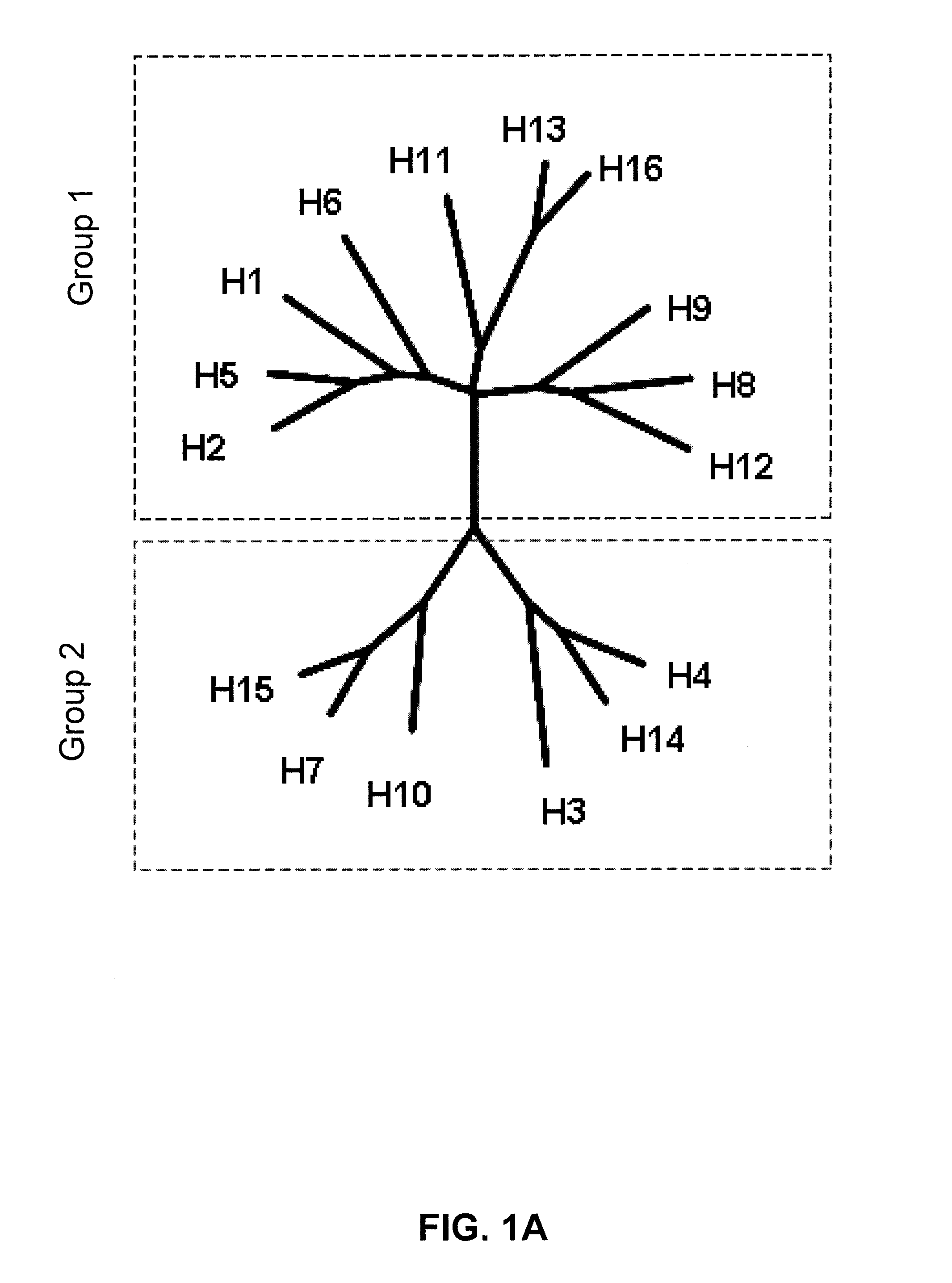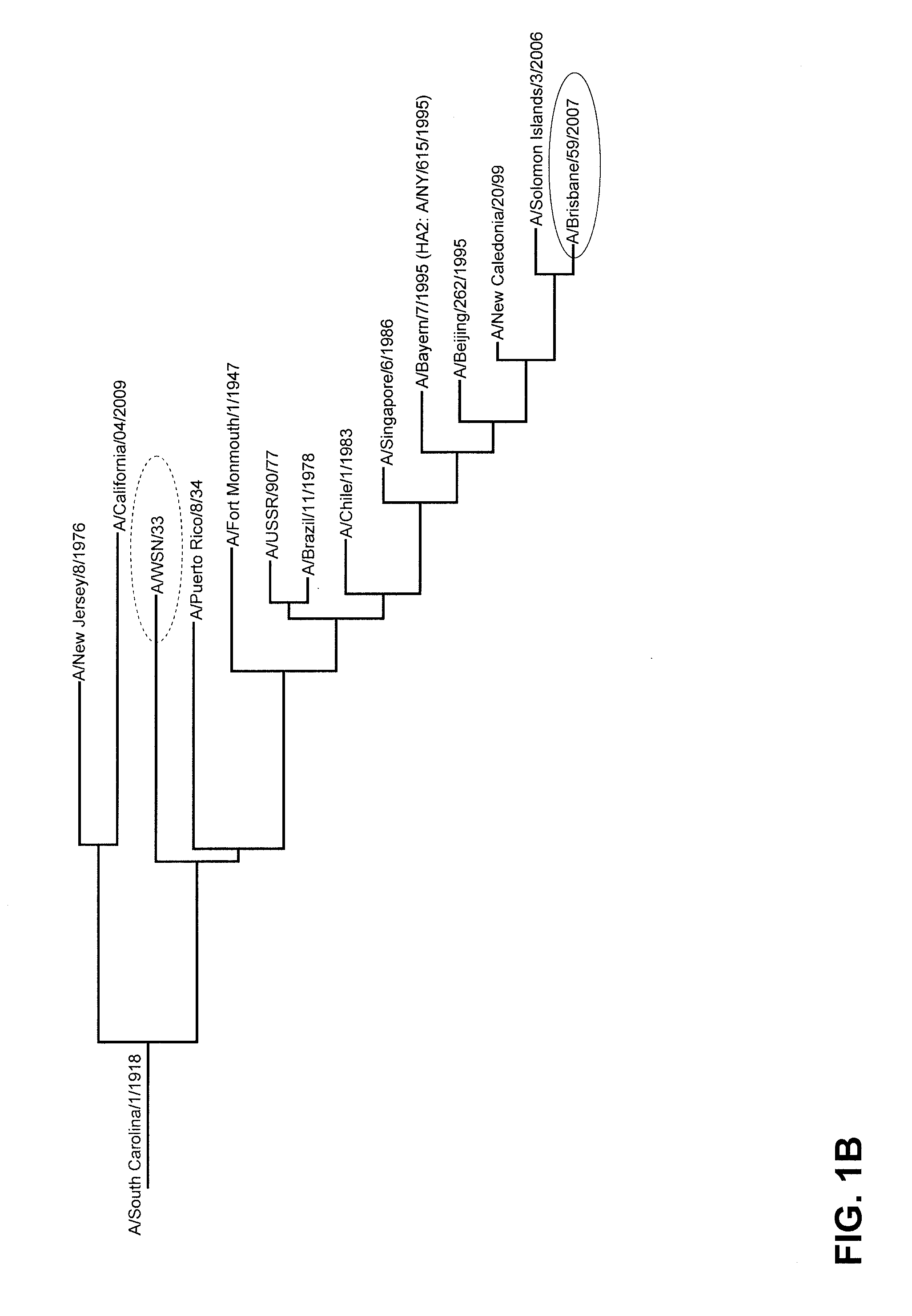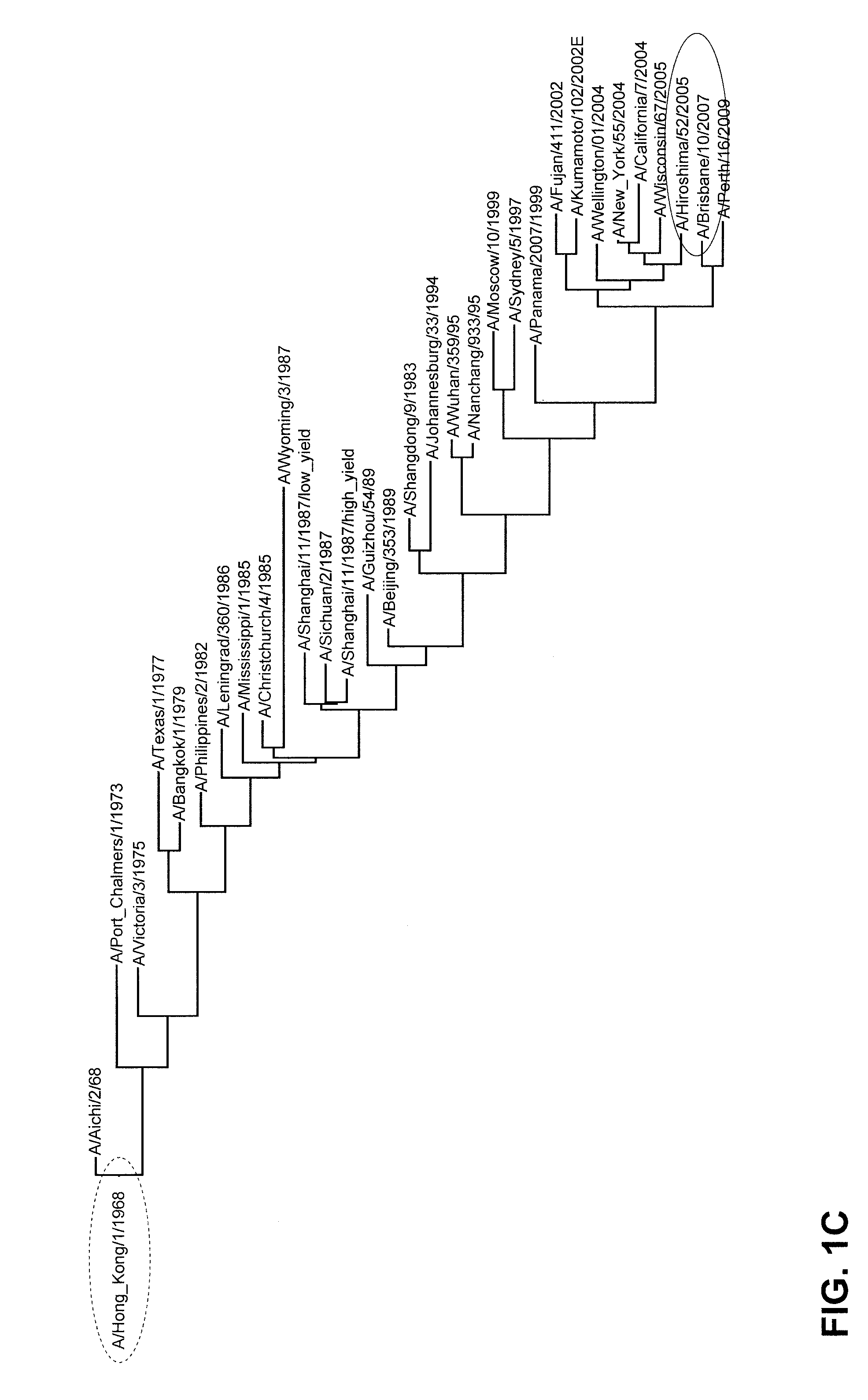Vaccination against influenza
a technology for influenza and vaccines, applied in the field of vaccines against influenza, can solve the problems of significant and realistic threat to global health, yearly standard use of seasonal vaccines does not provide protection, and poor immunological memory, so as to achieve a wide range of protection against heterologous effects
- Summary
- Abstract
- Description
- Claims
- Application Information
AI Technical Summary
Benefits of technology
Problems solved by technology
Method used
Image
Examples
example 1
Cross-Protection to a Heterologous Influenza Strain after 3 Rounds of Vaccination with a Seasonal Influenza Vaccine in Mice
[0098]Mice were immunized with trivalent virosomal seasonal Influenza vaccine Inflexal® V (Crucell) of the 2009 / 2010 season. This vaccine contains HA (30 μg / ml) and NA (amount not specified, generally determined to be between about 0.8 and 4 μg NA per 15 μg HA) of each of the following three Influenza strains: (H1N1 A / Brisbane / 59 / 07, H3N2 A / Uruguay / 716 / 2007, B / Brisbane / 60 / 2008) in the form of virosomes. A human dose of vaccine is 15 μg HA per strain, i.e., 0.5 ml. Mice were vaccinated 3 times with 20% of the human dose at 3 week intervals (50 μl intramuscular injection both quadriceps muscles of the hind legs per immunization), using a normal injection syringe with needle. Four weeks after the final immunization mice were challenged with 25× LD50 (LD50=dose of virus resulting in death of 50% of the exposed animals) of mouse adapted H1N1 Influenza strain WSN33, w...
example 2
Cross-Protection to a Heterosubtypic Influenza Strain after 3 Rounds of Vaccination with a Seasonal Influenza Vaccine in Mice
[0103]Example 1 demonstrated cross protection against a heterologous H1N1 strain. In this example it was tested whether such cross protection would also be extended to heterosubtypic strains.
[0104]Mice were immunized according to the same dosing scheme and with the same vaccine as in example 1. Four weeks after the final immunization mice were challenged with 25× LD50 of mouse adapted H5N1 Influenza strain HK / 156 / 97, which is heterosubtypic to the strains of which antigens are present in the vaccine. After challenge disease was monitored according to the same criteria as described for example 1.
[0105]FIG. 3A shows the Kaplan-Meyer survival curve of the mice after challenge, and surprisingly shows that there is significantly increased survival (7 out of 8 mice immunized with 3× vaccine) relative to control mice (0 out of 8, p<0.001, using Fisher's exact test).
[...
example 3
Breadth of Protection Conferred by Multiple Administrations of Inflexal® V 2009 / 2010 in Mice
[0110]The effect of seasonal influenza vaccine (H1N1 A / Brisbane / 59 / 07, H3N2 A / Uruguay / 716 / 2007, B / Brisbane / 60 / 2008: Inflexal® V, season2009 / 2010) administered once, or three times (time interval between administrations: 3 weeks) is tested in mice, which are subsequently (4 weeks after final immunization) challenged with: i) heterologous H1, H3 and B strains, ii) a heterosubtypic H5 strain, and iii) a heterosubtypic H7 strain (methods as in example 1-3) in independent experiments.
[0111]It is expected that 3 administrations of the seasonal vaccine will significantly protect the animals against heterologous and heterosubtypic influenza strains, that are not represented (i.e., the antigens of these strains are not comprised) in the vaccine.
PUM
| Property | Measurement | Unit |
|---|---|---|
| Time | aaaaa | aaaaa |
| Time | aaaaa | aaaaa |
| Time | aaaaa | aaaaa |
Abstract
Description
Claims
Application Information
 Login to View More
Login to View More - R&D
- Intellectual Property
- Life Sciences
- Materials
- Tech Scout
- Unparalleled Data Quality
- Higher Quality Content
- 60% Fewer Hallucinations
Browse by: Latest US Patents, China's latest patents, Technical Efficacy Thesaurus, Application Domain, Technology Topic, Popular Technical Reports.
© 2025 PatSnap. All rights reserved.Legal|Privacy policy|Modern Slavery Act Transparency Statement|Sitemap|About US| Contact US: help@patsnap.com



